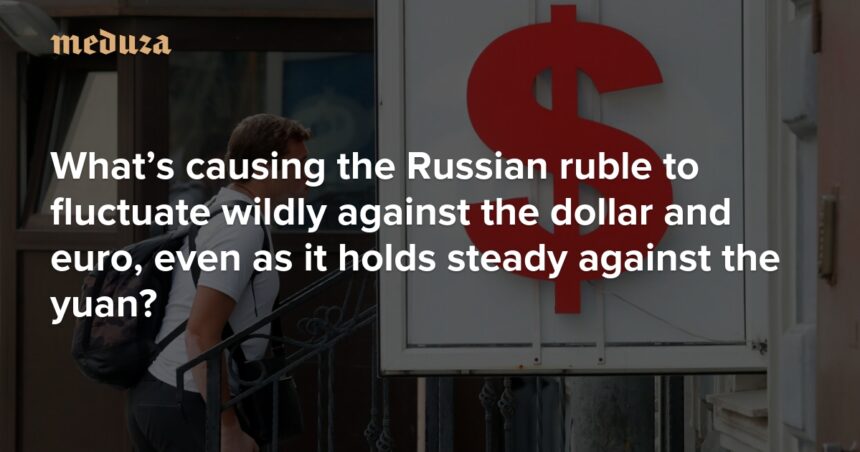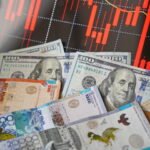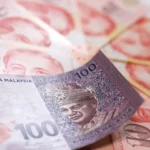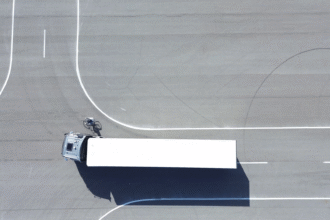- ‘We have no choice now’ Desperate to circumvent sanctions and do business with China, Russian companies resort to cryptocurrency and bartering
- ‘We have no choice now’ Desperate to circumvent sanctions and do business with China, Russian companies resort to cryptocurrency and bartering
- So what’s causing the swings?
- Russia’s largest stock exchange has stopped trading in U.S. dollars and euros. What does this mean for the ruble?
- Out with the old As the Chinese yuan gains prominence in Russia’s economy, are ordinary Russians ready to abandon the dollar?
- Out with the old As the Chinese yuan gains prominence in Russia’s economy, are ordinary Russians ready to abandon the dollar?
- Is this the new norm?
- Making bank How Gazprombank’s Luxembourg subsidiary has made record profits since Russia’s full-scale invasion of Ukraine
- Making bank How Gazprombank’s Luxembourg subsidiary has made record profits since Russia’s full-scale invasion of Ukraine
- Sign up for The Beet
August has been a turbulent month for Russia’s currency market. According to official exchange rates set by the Central Bank, the ruble initially weakened, losing over 10 percent of its value against the dollar, only to rebound just as quickly. Meanwhile, on the stock exchange, market dynamics told a completely different story, sparking debates among economists about the underlying factors behind the fluctuations and which rate should be considered “correct.” Meduza explains what’s been happening with the ruble and what experts think may lie ahead for the Russian currency this fall.
On August 9, the ruble began to experience significant fluctuations. That Friday, Russia’s Central Bank announced that the U.S. dollar had risen by 1.4 rubles, and the euro by more than a ruble. The exchange rate of 87 rubles to the dollar marked a recent high, even though there were no significant events that day to explain the jump. Since the announcement came late in the day, just before the weekend, economists reacted cautiously, arguing that demand for foreign currency was low due to payment issues, so the ruble would likely strengthen.
However, things only worsened after the weekend. By Tuesday, the exchange rate had climbed by another two rubles against the dollar and 1.5 rubles against the euro. The upward trend continued the next day, with the dollar rising another three rubles and the euro nearly four, pushing the rate for the European currency above 100 rubles for the first time since April. In just one week, the dollar rose by 9 percent and the euro by 8 percent, while the yuan saw a modest increase of 1.6 percent.
Even though we’re outlawed in Russia, we continue to deliver exclusive reporting and analysis from inside the country.
Our journalists on the ground take risks to keep you informed about changes in Russia during its full-scale invasion of Ukraine. Support Meduza’s work today.
Economists searched for an explanation, but their theories were unconvincing. Mikhail Vasilyev, the chief analyst at Sovcombank, attributed the fluctuations to “geopolitical tensions in the Kursk region.” However, Ukraine’s operation had started on August 6, and currency movements in the days following were within a range of 80 kopecks. Anton Pustovoitov from Pervaya Management Company suggested that the ruble was influenced by a “pronounced effect from the end of the tax period,” though more than a week had passed since then. Alexander Isakov from Bloomberg Economics pointed to falling oil prices, but oil revenue usually impacts the market with a lag of several months, making it unlikely to have caused such a sharp shift in exchange rates. Other explanations included credit cycles, a slowing GDP, and falling exports.
Some analysts speculated that importers had resolved payment issues and suddenly ramped up currency purchases, though there was no evidence to support this. On the contrary, Central Bank data from August 13 showed that imports were declining even more rapidly, as noted by Dmitry Polevoy, the chief strategist and investment director at Astra Asset Management. Another theory linked the fluctuations to the timing of specific sanctions: the U.S. Treasury had planned to end all dealings with the Moscow Exchange, which it placed on the list earlier this summer, by August 13. This could have triggered a surge in demand for foreign currency, but the deadline was eventually extended to October. Yaroslav Kabakov, the strategy director at Finam, speculated that counterparties might have rushed to meet the original deadline and that the fluctuations would soon end.
Initially, this seemed to be the leading theory. On August 14, the Central Bank lowered the dollar rate by a whole 2.6 rubles. The next day, the dollar dropped by another 1.2 rubles, and the euro fell by two rubles, slipping below 100 rubles. As the weekend approached, exchange rates showed only slight changes, leading analysts to conclude that the turbulence had ended.
But that assumption turned out to be wrong. On August 19, the euro rose by another ruble, and the next day, the dollar followed suit. By midweek, the euro had climbed above 101 rubles again, and on August 26, it crossed the 102-ruble mark for the first time since October 2023. It became clear that the problem was rooted elsewhere.
So what’s causing the swings?
The recent currency swings seem to stem from changes in how the exchange rate is calculated, a consequence of the sanctions brought against Russia’s largest stock exchange, the Moscow Exchange. When the U.S. Treasury Department added the Moscow Exchange to the SDN list on June 12, it effectively forced the exchange to stop trading in U.S. dollars and euros. In response, the Central Bank revised its method for determining the official exchange rate, which was previously based on transactions on the Moscow Exchange. Now, the rate is calculated using bank reports and data from other over-the-counter digital trading platforms.
Financial institutions report their transactions to the Central Bank by 3:30 p.m. Moscow time each trading day. The Central Bank then excludes transactions with extreme low or high prices to prevent them from skewing the average rate. The method also takes into account the volume of currency traded, giving more weight to larger transactions when setting the official rate. There are also additional restrictions; for example, if a single credit institution supplies 75 percent or more of the currency, its transactions are excluded.
The interbank market has some distinct features. If one party needs to complete a transaction quickly, it can negotiate the rate, adjusting it up or down depending on the other party’s needs. In contrast, on the exchange, transactions must be made at the current market price. Moreover, while the exchange is generally transparent, trading volumes on the interbank market aren’t publicly disclosed. Although a dynamic exchange rate is published, it offers little help in predicting the Central Bank’s official rates due to the complex calculation formula. This has led to intraday fluctuations reaching up to five rubles per dollar.
Meanwhile, the yuan is still traded on the exchange, and its price has remained relatively stable. Over the past month, the dollar has fluctuated between 84 and 93 rubles (a 10.7 percent range), while the Chinese currency has moved within a narrower range of 11.6 to 12.2 rubles (a 4.9 percent range).
But even with the yuan, things aren’t so straightforward. The gap between exchange rates on the Moscow Exchange and abroad is now the widest it’s been in 10 years. If you calculate the dollar-to-yuan cross rate using Central Bank data, the U.S. currency would be valued at 7.85 yuan per dollar in Russia, compared to 7.12 abroad. The difference is a record 10.3 percent, noted economist Egor Susin. There used to be a surplus of yuan in Russia, fueled by regular sales from exporters and the Central Bank, explained Susin. When the Chinese currency became cheaper in Russia, foreign banks would buy it on the exchange, transfer it abroad, and sell it at a higher price, helping to maintain exchange rate balance. Now, due to sanctions, such arbitrage has become more difficult.
As a result, the currency market has split into three segments, each with its own imbalances. Commenting on the situation, Astra’s Dmitry Polevoy said: “We no longer know what the true exchange rate is — not just for the dollar and euro, but also for the yuan. […] The accuracy of the official rates has significantly decreased. This might just be the new reality we’ll have to live with going forward.”
Is this the new norm?
Economists and analysts are concerned that the ruble’s heightened volatility may persist. However, according to Sofia Donets, chief economist at Tinkoff Investments, the final weeks of August showed that discrepancies in exchange rates between different currencies can be resolved when arbitrage opportunities arise. Analysts at Raiffeisenbank noted that “the pace and timing of normalization are difficult to predict due to the unprecedented nature of the situation.”
The ruble has two strong drivers, explained Dmitry Alexandrov, the managing director at Ivolga Capital. First, the , currently at 18 percent, encourages people to save in rubles rather than in foreign currencies, and it also curbs imports, which are often financed with credit. The Central Bank has warned that the rate could rise further in September.
Second, sanctions have made transactions between Russia and its trading partners more difficult, reducing demand for foreign currency. Importers aren’t buying yuan because they can’t send it abroad in exchange for goods. As Finam’s Yaroslav Kabakov put it, “We would be heading toward 100 rubles per dollar if not for the issues with import payments.” Dmitry Rozhkov from Tsifra Bank believes that if a solution to the payment issue is found, businesses will act on pent-up demand, potentially leading to a currency shortage in Russia.
Valery Weisberg from REGION Investment Company is convinced that the payment situation will only get worse in September, as Raiffeisenbank plans to stop cross-border transfers in any foreign currency. He predicted that this will lead the dollar to briefly dip below 87 rubles, but that this will be “the last time the dollar trades in the 85–87-ruble range.” “From that point through the end of the year, it will move toward 90 rubles to the dollar,” he said.
A consensus forecast from economists surveyed by the Central Bank also predicts the ruble will reach a rate of 90 to the dollar by the end of 2024. This expectation is driven by hopes that payment issues will be resolved and by declining oil prices, which had remained elevated due to heightened tensions in the Middle East. Additionally, as SberCIB analysts point out, the requirements for mandatory currency sales have been relaxed.
Economists surveyed by RBC don’t expect the market to continue its “currency swings” in September. And Raiffeisenbank analysts are confident that “there have been no significant changes in the fundamental factors driving the ruble’s exchange rate.” Sovcombank’s Mikhail Vasilyev added that in the near term, the rate “will be shaped more by geopolitical developments than by fundamental factors.”
Meanwhile, economists have suggested a purely technical fix for the issue of exchange rate imbalances. Experts interviewed by Vedomosti support a plan to calculate the official yuan rate based on over-the-counter trading, similar to the approach used for the dollar and euro. They argue that having even one currency remain stable distorts the perception of fair exchange rates and undermines trust in the Central Bank’s official data. So far, the bank has not responded to the proposal.
Sign up for The Beet
Underreported stories. Fresh perspectives. From Budapest to Bishkek.




















